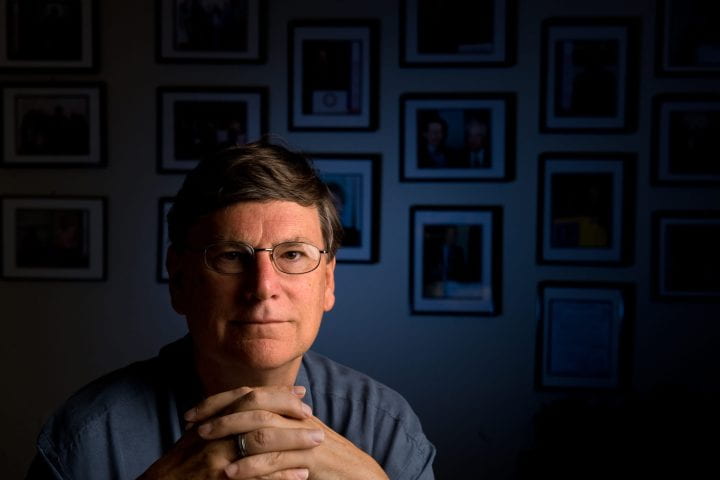A love/hate relationship
New book by UCI’s Russell Dalton explores dynamics between voters, political parties.

If the relationship between voters and big-party politics was “Facebook official,” the status would be: “It’s complicated.”
“People today are more interested in politics, care about more diverse issues and are more assertive,” says Russell Dalton, UC Irvine professor of political science and founding director of the campus’s Center for the Study of Democracy. “These factors make it difficult, if not impossible, for parties to satisfy all their possible supporters at the same time.”
In the recently published Political Parties & Democratic Linkage, he and his co-authors explain that despite rising cynicism and voter discontent, political parties are still vital in uniting disparate segments of government and in connecting citizens’ preferences to policies.
Here, Dalton discusses this love/hate relationship, how the media exacerbate it, and why political parties still dominate the electoral process.
Q: Why are voters discontented, and – based on your research findings – are these reasons valid?
A: One of the paradoxes is that evidence shows modern party systems work better than they did a generation ago, but more people in the U.S. and Europe are cynical about political parties. Trust in them has decreased markedly over the past several decades in almost every Western democracy. One might argue that some of the decline is because certain parties or national party systems are performing poorly; few people look at Washington, D.C., today and feel good about partisan politics in America.
But the fact that this downward trend exists in most democracies leads us to highlight other factors. A more assertive public is more likely to challenge political leaders rather than deferentially accept their claims. Media have probably contributed to this trend by presenting more critical views of politics and politicians. The empirical reality is that democracy now appears to function in a more egalitarian manner than it did in the quiet, supportive years of the 1950s and early ’60s.
Q: So despite public cynicism, political parties prevail. Why?
A: There is a classic line in political science: Democracy without parties is unthinkable. Even though parties no longer
control campaigns as they once did, elections are still about choosing among parties. Interest groups and lobbies offer ideas about policies, but the policy process in government is still structured around party politics. If parties didn’t exist, someone would have to invent them for democracy to function.
That said, the persistence of party politics also comes from the adaptation of individual parties. Just like the market economy depends on individual businesses, democratic politics depends on individual parties. But some parties
– like businesses – fail and lose the next election. Some new parties – like new businesses – emerge to offer a novel take on issues or a novel set of candidates. And existing parties become more attuned to voters and change their positions accordingly. This adaptability of individual parties keeps the overall party system working.
Q: In what other ways have parties accommodated changing societal views and, in turn, new voters?
A: Most European parties used to depend on party members for campaign workers and financial contributions; there are far fewer members today. Established parties have been challenged by new political movements on the left and right. And parties that once relied on a large base of voters now face greater fluidity and volatility in electoral outcomes. All this has led to claims of the imminent death of political parties. Like the old story of Mark Twain’s premature obituary, our book counters that these claims are greatly exaggerated.
In most nations, parties have coped with membership decline by hiring campaign experts, running media campaigns that rely less on door-to-door contact, and funding this from direct government subsidies. Rather than offering a fixed ideology, parties adopt issues that reflect their core voters’ preferences. Instead of selling their ideology, they market themselves after seeing what voters want. And parties have adapted to the media age by selecting leaders who communicate well and by engaging with voters via social media and the Internet. With parties more responsive to voters, the modern campaign bears little resemblance to the campaigns of old.
In liberal/conservative terms, there is nearly a perfect fit between voters’ orientation and the position of their party. Democracy works by allowing like-minded voters and parties to find each other, which can be especially challenging in the complex multiparty systems of Europe. Equally important, data show that when parties or governments move away from the voters, they suffer in the next elections. This leads us to conclude that elections are about not just making good choices for the future, but also remedying bad choices of the past. This is what keeps democracy representative and the relationship between voters and partisan politics intact.